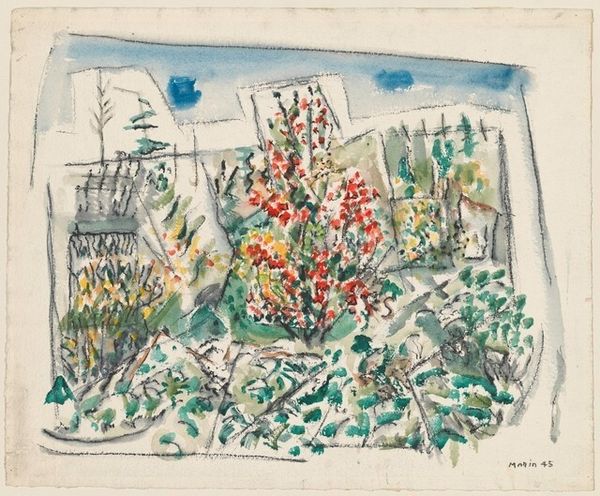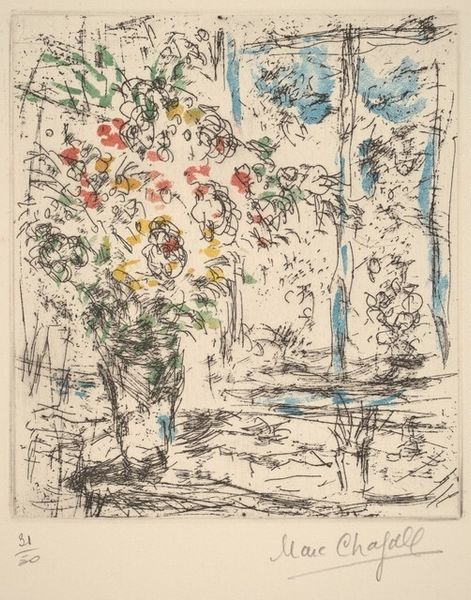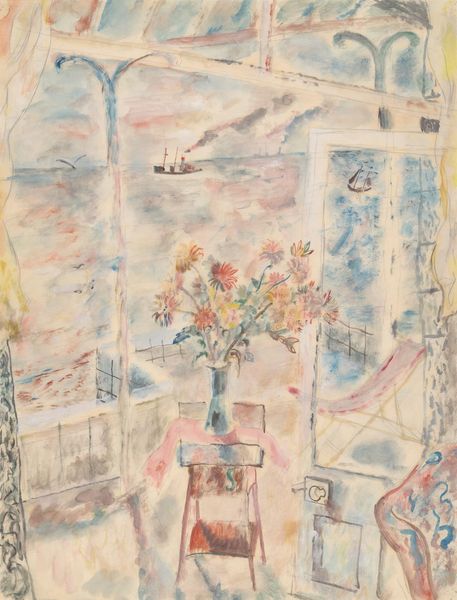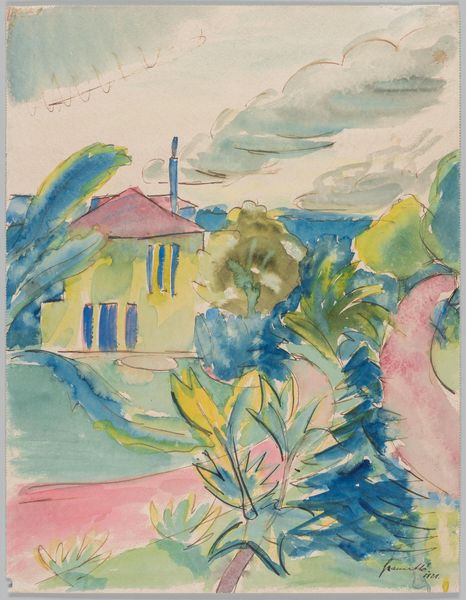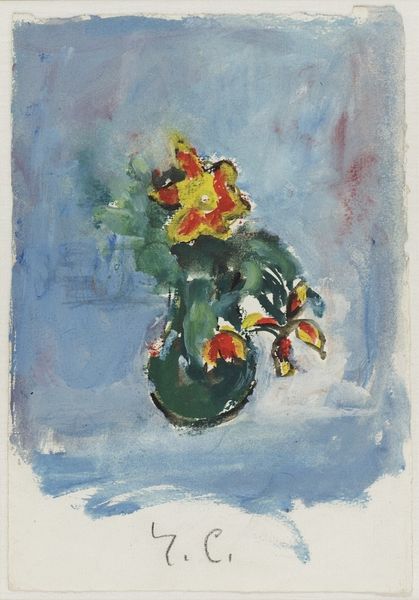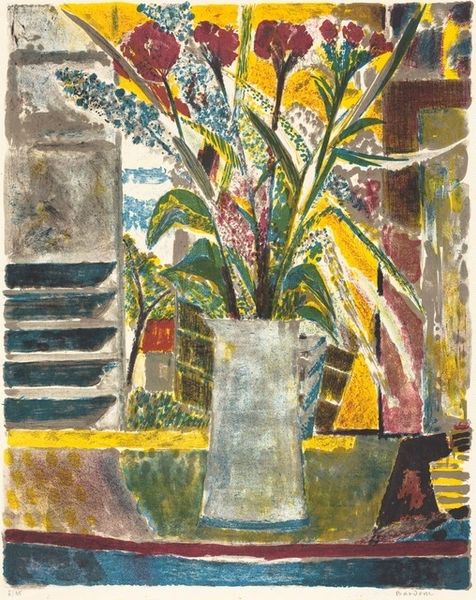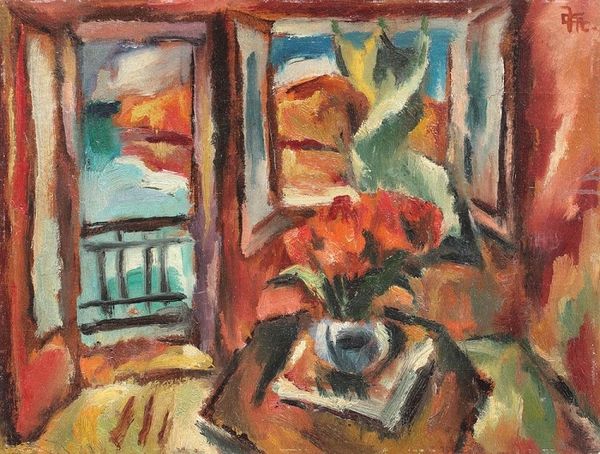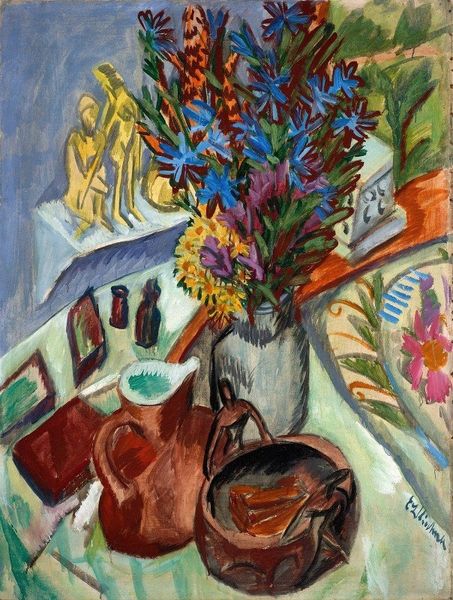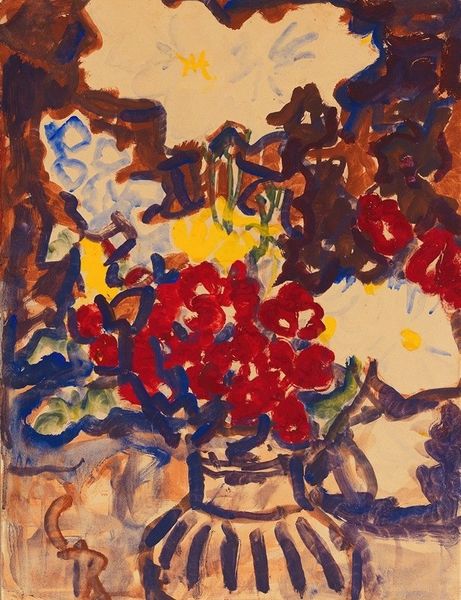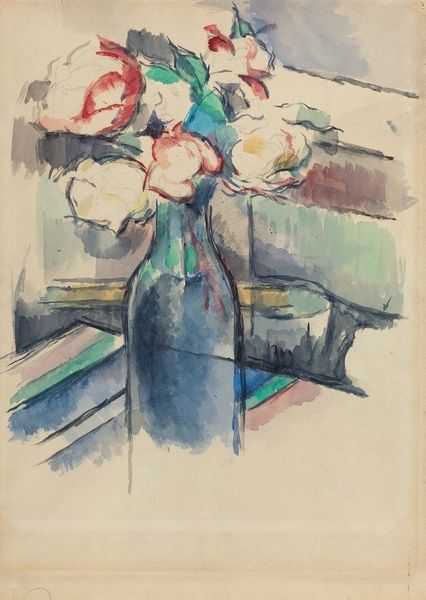
painting, watercolor
#
painting
#
landscape
#
watercolor
#
watercolour illustration
#
modernism
#
watercolor
Copyright: Public domain
Curator: This watercolor by Charles Demuth, "Study for Poster Portrait: Marsden Hartley," painted in 1924, offers such an intimate glimpse into artistic circles of the time. The soft washes of color and almost casual linework give it an unfinished, preparatory feel. Editor: I’m really struck by the juxtaposition of the vibrant flower against the muted winter landscape outside the window. What do you see in this piece? Curator: I see Demuth positioning Hartley, not just as a fellow artist, but embedding his identity within broader themes of nature and interiority. The flower, bursting with life, contained within the domestic space, speaks to the tensions between public persona and private self that many queer artists of this era navigated. Editor: So, the window becomes a frame within a frame, emphasizing that boundary? Curator: Precisely. The "snow winter" visible outside, juxtaposed with the vibrant bloom, perhaps hints at Hartley's own internal landscape - a vibrant spirit weathering societal chill. And consider the fragmented words, the textual elements floating around the composition. What do those suggest to you? Editor: They almost feel like… clues? Hints of Hartley's character? Maybe Demuth is showing the different facets of his friend. Curator: Absolutely! And by including those textual fragments, Demuth disrupts a singular reading, inviting us to piece together Hartley's portrait ourselves. This act of visual annotation suggests that identity is not fixed, but a layered construction of perception, environment, and perhaps even societal expectations. It definitely moves past a formal portrait and really delves into cultural identity. Editor: It's fascinating how much this small watercolor reveals about the complex relationship between these artists and their world. I hadn't considered how much social commentary could be packed into what seems like a simple still life. Curator: Exactly! Art often serves as a potent lens through which to examine our histories, our identities, and our relationships to one another. It urges us to think critically.
Comments
No comments
Be the first to comment and join the conversation on the ultimate creative platform.
